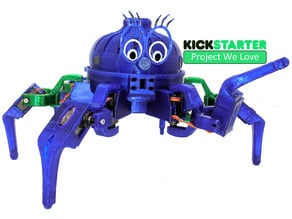奥迪奥技术卡 ATH-M40x 连轴器
Audio Technica ATH-M40x Hinge
使用说明
- 所有模型资源均由用户上传分享,内容来源于网络公开资源
- 侵权投诉:通过抖音私信 @jobsfan 联系我们(需附版权证明),24小时内处理
- 模型将通过邮件发送(5分钟内自动发货),感谢理解带宽压力
关于费用
我们是爱好者共建社区,为维持服务器成本,每个模型收取微量费用(仅覆盖基础开支)。我们承诺最低成本运营,感谢您的支持!
扫码手机访问
抖音私信 @jobsfanSummary
This is a remix of mikuslaw's model for the hinge. With the original model, I wasn't able to put the wire through the channel, even after trying to clean it. To mitigate that, I made a hole along the length of the channel, except for the first and last few millimeters of it. This exposes most of the channel, making it easier to insert the wires.
Everything else is the same as the original model.
The model is for the right side, but the printed part in the photos is for the left side. If you need the part for the left side, mirror it by the X axis (not by both X and Y, as was stated in the original model).
So far, the part seems like it would hold up well. As of time of writing, I've been using the headphones like this for about 10 days and they feel like new.
During assembly, it felt like the hinge was way tighter than the original. This was way less noticeable once they were completely assembled, but if I pay attention, I find it obvious that the 3D printed hinge is tighter and squeakier than the original. I don't notice this during regular use, so I don't really care, but I suspect that shrinking the top part of the model (either via software or by sanding it down) may fix the issue. Also, using lubricant on it might help.
Please also see the summary and comments on the original model by mikuslaw.
Print Settings
- Printer brand:
Creality
- Printer:
Ender 3
- Rafts:Doesn't Matter
- Supports:Yes
- Resolution:0.10mm
- Infill:100%
- Filament brand:
RE3D
- Filament color:
Black
- Filament material:
PLA
- Notes:
Printed standing as shown in the Cura screenshot. Supports were set to "Touching buildplate".
Post-Printing
I used some metal files to mainly round out the spots that were contacting the supports. This was required to make hinge fit the earcup part of the headphones.
How I Designed This
I imported the original STL file in FreeCAD and created a plane such that the channel path was roughly lying on that plane. On that plane I drew two curves that went roughly along the channel, connected them with two lines, extruded the sketch and subtracted the resulting solid from the model.
最新模型
-
霍尔门科olen传递仪式2024-05-08
-
Egyptian themed catan pieces2024-05-08
-
Reolink Duo 2/3 Powerbank Adapter2024-05-08
-
大型交通指挥棒 - 手电筒扩散器2024-05-05
-
壁挂搁架挂钩2024-05-05
最热下载
-
Vorpal The Hexapod Walking Robot2023-03-26
-
Hexagonal Nanoleaf - Hexaleaf2023-03-26
-
ZTE MU5001 上位电容器2024-01-09
-
Kumonga的孩子与澳大利亚蜘蛛驯兽队2024-03-17
-
7英寸HDMI显示器-B外壳2024-04-01











